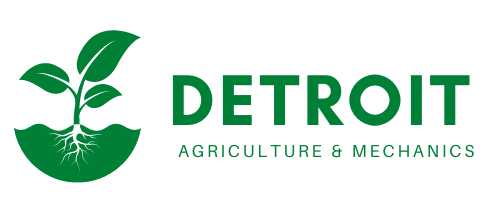Risk Analysis:
Detroit A&M recognizes that operating in the education and agricultural sectors involves certain risks and challenges. The risk analysis below identifies potential risks, outlines contingency plans, and discusses regulatory and compliance considerations:
- Market and Competitive Risks:
- Risk: Intense competition from other educational institutions offering similar programs.
- Contingency Plan: Detroit A&M will differentiate itself through its unique curriculum, hands-on training, and emphasis on practical skills development. Continuous market research and strategic partnerships will help identify emerging trends and maintain a competitive edge.
- Financial Risks:
- Risk: Fluctuations in student enrollment and micro-green sales, affecting revenue generation.
- Contingency Plan: Implement sound financial management practices, including diversified revenue streams, prudent budgeting, and effective cost control measures. Maintaining reserves and exploring alternative funding sources will help mitigate financial risks.
- Operational Risks:
- Risk: Equipment breakdown, power outages, or disruptions in farm operations.
- Contingency Plan: Regular maintenance and inspection of equipment and facilities, contingency plans for power outages, and backup systems will be in place. Proper training and supervision of staff will ensure smooth operations and minimize disruptions.
- Regulatory and Compliance Risks:
- Risk: Non-compliance with education regulations and agricultural guidelines.
- Contingency Plan: Maintain a thorough understanding of relevant regulations and guidelines. Establish robust internal systems and procedures to ensure compliance. Regular audits and assessments will be conducted to identify and address any potential compliance issues.
- Environmental Risks:
- Risk: Natural disasters or adverse weather conditions impacting farm production.
- Contingency Plan: Implement risk management strategies, such as insurance coverage and diversification of farming methods. Embrace sustainable farming practices that enhance resilience to environmental risks.
- Student and Employee Risks:
- Risk: Student or employee accidents or injuries during practical training.
- Contingency Plan: Implement stringent health and safety protocols, provide comprehensive training on safe work practices, and maintain appropriate insurance coverage. Regular safety inspections and ongoing risk assessments will be conducted.
Detroit A&M is committed to proactively addressing risks and challenges to ensure the successful operation of the institution. By developing robust contingency plans, adhering to regulatory requirements, and maintaining a focus on risk mitigation, Detroit A&M aims to create a safe, compliant, and resilient educational and agricultural environment.
